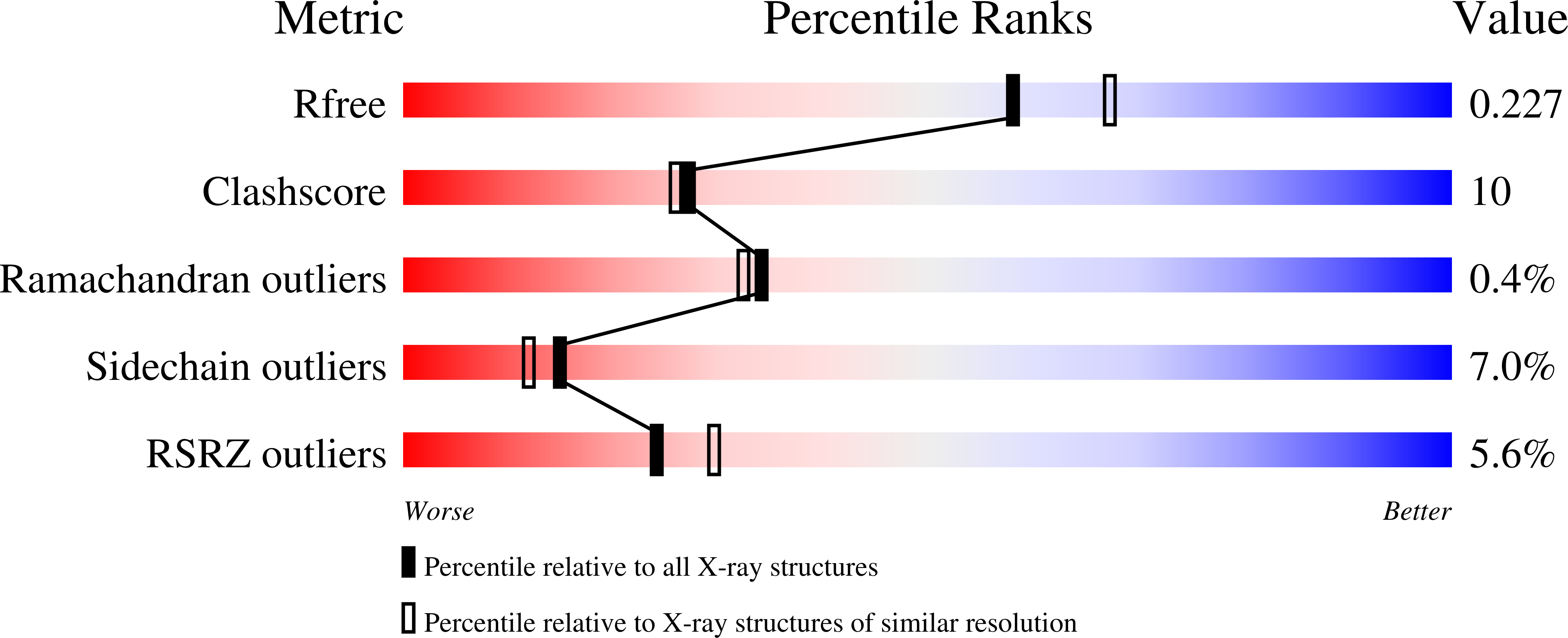Structures of 1-Deoxy-D-Xylulose-5-Phosphate Reductoisomerase/Lipophilic Phosphonate Complexes
Deng, L., Endo, K., Kato, M., Cheng, G., Yajima, S., Song, Y.(2011) ACS Med Chem Lett 2: 165-170
- PubMed: 21379374
- DOI: https://doi.org/10.1021/ml100243r
- Primary Citation of Related Structures:
3ANL, 3ANM, 3ANN - PubMed Abstract:
Fosmidomycin, a potent inhibitor of 1-deoxy-D-xylulose-5-phosphate reductoisomerase (DXR), has antibacterial and antimalaria activity. Due to its poor pharmacokinetics, more lipophilic DXR inhibitors are needed. However, the hydrophobic binding site(s) in DXR remains elusive. Here, pyridine/quinoline containing phosphonates are identified to be DXR inhibitors with IC(50) values as low as 840 nM. We also report three DXR:inhibitor structures, revealing a novel binding mode. The indole group of Trp211 is found to move ~4.6 ? to open up a mainly hydrophobic pocket, where the pyridine/quinoline rings of the inhibitors are located and have strong ¦Đ-¦Đ stacking/charge-transfer interactions with the indole. Docking studies demonstrate our structures could be used to predict the binding modes of other lipophilic DXR inhibitors. Overall, this work shows an important role of Trp211 in inhibitor recognition and provides a structural basis for future drug design and development.
Organizational Affiliation:
Department of Pharmacology, Baylor College of Medicine, 1 Baylor Plaza, Houston, Texas 77030.
















